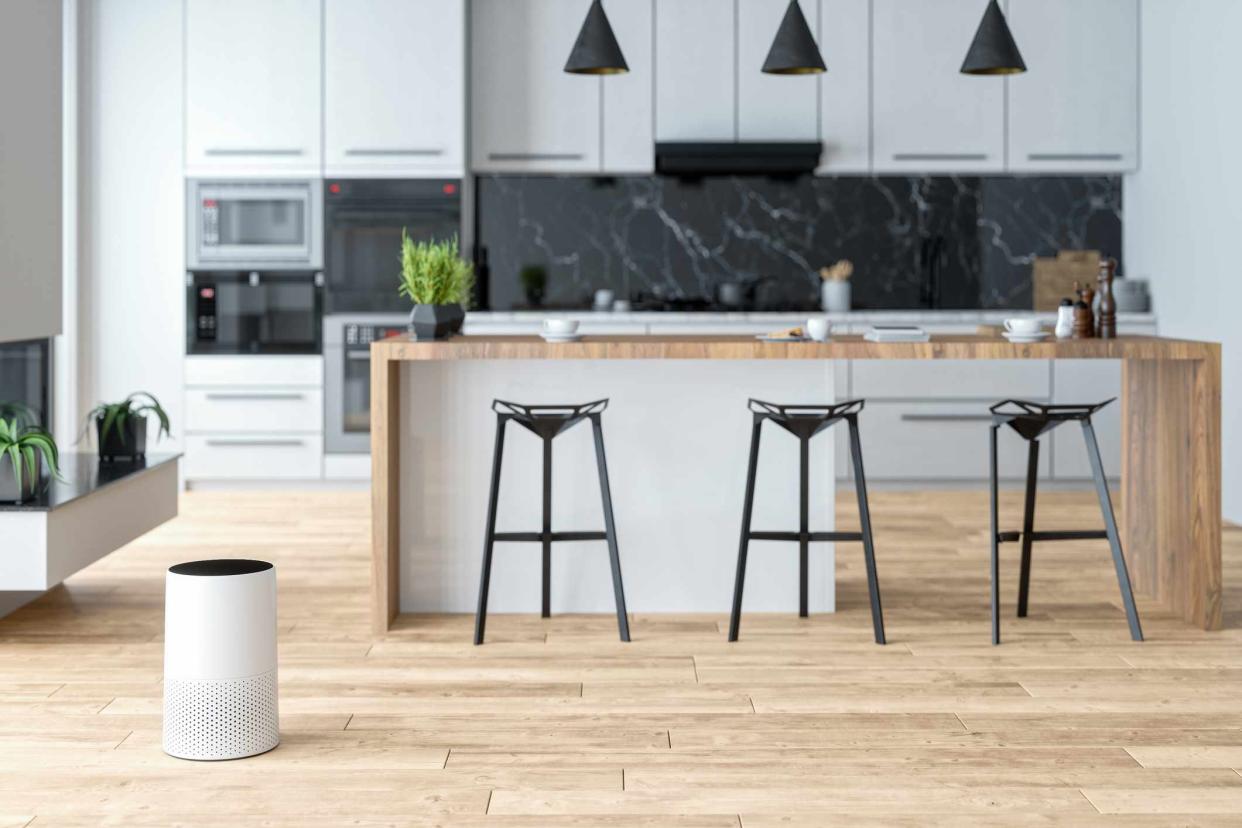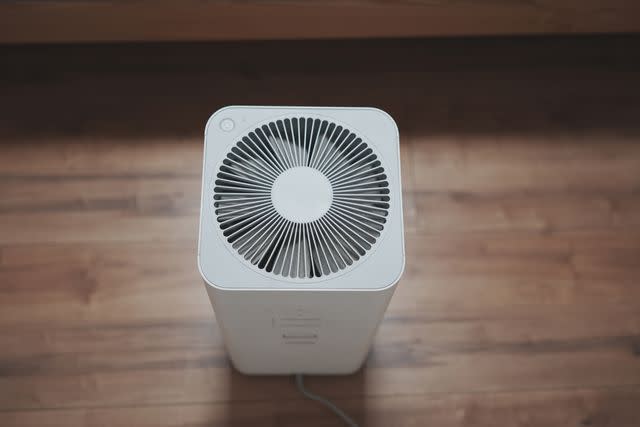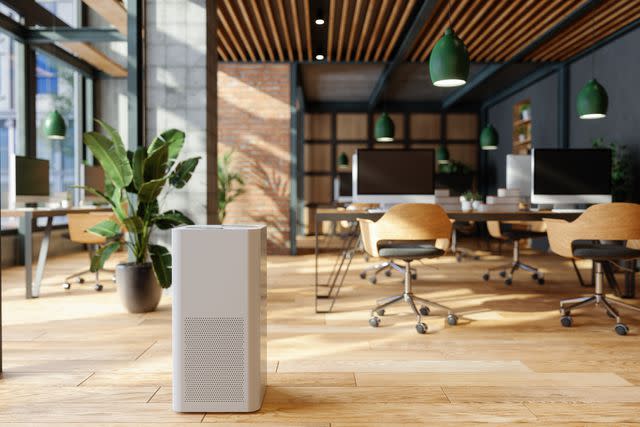Do Air Purifiers Help With Dust? Everything You Need to Know

imaginima / Getty Images
The air we breathe carries much more than oxygen. Air, especially air indoors, collects harmful pollutants like dust and allergens, which can irritate our eyes, noses, and throats.
Air purifiers are uniquely designed to combat these issues, by removing everything from pollen to pet dander in your air. However, how effective your air purifier is depends on a number of factors. Find out what air purifiers do well as well as other solutions to increase the air quality in your home.
What Are Air Purifiers?

FanPro / Getty Images
Based on a report from the Environmental Protection Agency (EPA), indoor air can be significantly more polluted, as much as two to five times, than outdoor air. Air purifiers are appliances that are uniquely designed to tackle this issue and remove air pollutants like dust, smoke, and allergens from the air in your home. Air purifiers come equipped with different filters that are meant to target different contaminants. They also come in multiple shapes and sizes and cover a range of square footage, depending on the make and model.
Despite these differences, an air purifier's basic function is to pull air through an internal filter (or multiple filters) to trap dust, allergens, mold, pet dander, bacteria, and other unwanted particles floating in our air.
How Do Air Purifiers Work?
As dust particles float around if your indoor air, your air purifier sucks the surrounding air through its filters to capture the vast majority of those unwanted pollutants. When the air floats out the other side of your purifier, it's carrying far fewer contaminants like pollen and bacteria.
With this in mind, the key component of a successful air purifier is the filter, or filters. Most air purifiers use a high-efficiency particulate air (HEPA) filter, which can capture particles at 0.3 microns in size with 99.9% efficiency. The sources and sizes of dust particles vary from home to home, but the vast majority are no smaller than 0.3 microns, making HEPA filters a particularly useful tool when it comes to reducing dust.
Some air purifiers use additional filters, such as odor filters and washable or reusable pre-filters, to capture a broader range of pollutants. If you're looking to purchase an air purifier for your home, make sure you understand the different types of air filters included, so you know which appliance would be the most effective for your needs.
Do Air Purifiers Remove Dust?
In short, yes. Most air purifiers are very effective at removing as much as 99% of the dust within your air. However, air purifiers are certainly not the sole solution for poor indoor air quality.
While many purifiers pledge to remove the vast majority of pollutants like dust and other allergens from your indoor air, an air purifier's success rate depends on several additional factors. For instance, the placement of your air filter matters a great deal. Some air purifiers cover a greater square footage than others. Your air purifier will also trap more unwelcome particles if it's placed in a high-traffic area of the home.
Additionally, some people should pay close attention to the filters in each air purifier their researching. For individuals with respiratory-related issues, many experts suggest an air purifier that is ASL- or AAFA-certified.
Other Ways to Get Rid of Dust in Your Home

onurdongel / Getty Images
The term "dust" encompasses much more than the thin layer of gray film covering your knick knacks and tabletops. It's comprised of indoor pollutants, such as dead skin cells and pet dander, as well as contaminants from outside, like pollen and smoke. However, no matter the number of pets you own, how often you leave your windows open, or how regularly you clean, one thing is certain: no household is immune to dust.
Appliances like air purifiers can certainly reduce the level of dust, allergens, and other pollutants floating in your air, but there are plenty of other ways to get rid of dust in your home and ultimately increase your air quality.
Wash your bedding, including pet beds and blankets, on a consistent basis.
Clean your rugs, carpets, and other fabric furniture often. You can also swap your fabric furniture to leather or vinyl to make cleaning easier.
Since indoor air is often poorer in quality than outdoor air, open your windows and doors on occasion.
Maintain an indoor humidity level of no more than 60%.
Read Next: How to Prevent Dust From Building up So Quickly - The Spruce
Read the original article on The Spruce.

